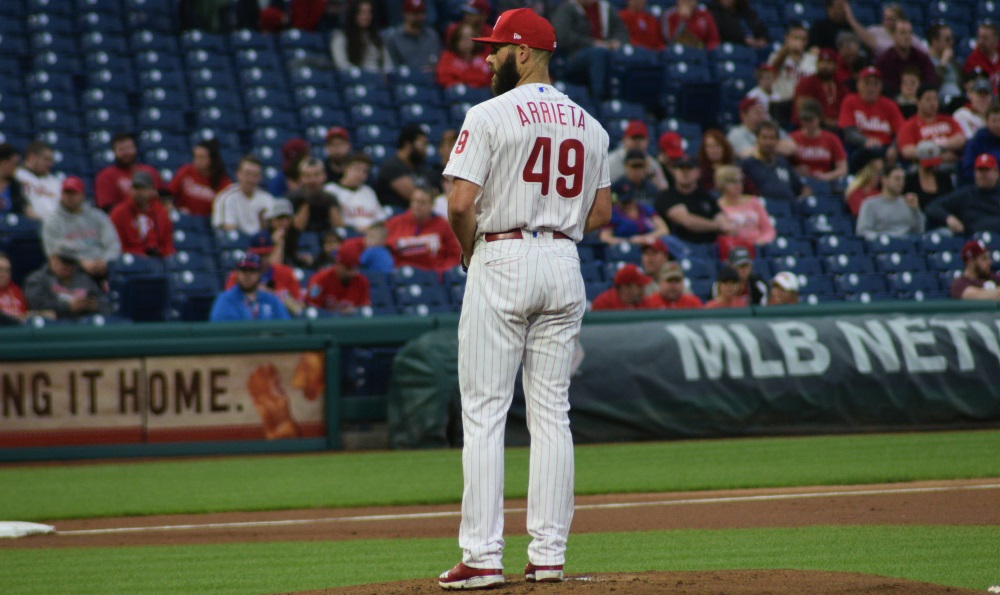The Phillies Have a Brand-New Starting Pitcher
Let me share with you a familiar-sounding story. As a rookie back in 2016, Zach Eflin wasn’t good. There were 181 starting pitchers that year who threw at least 50 innings, and only two of them wound up with a lower strikeout rate than Eflin did. And then as a sophomore in 2017, Eflin wasn’t good. There were 189 starting pitchers that year who threw at least 50 innings, and only four of them wound up with a lower strikeout rate than Eflin did. Yes, there’s more to pitching in the major leagues than generating strikeouts, but Eflin didn’t have anything going in his favor. So he showed up to camp this past spring feeling especially optimistic. In February of 2018, Zach Eflin felt like he was in the best shape of his life.
Admittedly, the story had some substance. Eflin had felt knee pain for most of his life. After the 2016 season, he had surgery to repair the patella tendon in both of his legs. That was good for the pain, but bad for his strength. Eflin didn’t get to have a normal offseason, and he pitched while underweight. The idea this time around was that Eflin would be able to use his lower body. Over the winter, he added something like 20 pounds of muscle to his legs. It all sounded good. But then, best-shape stories always sound good. In the moment, it’s impossible to know who’s going to be better, and who’s going to be the same.
Well, Zach Eflin isn’t the same. He isn’t the same, for the reasons just stated. He’s got the same strikeout rate as Chris Archer. He’s got the same strikeout rate as Jose Quintana. He nearly has the same strikeout rate as Aaron Nola. Eflin is pitching to keep a rotation spot. But in the bigger picture, it’s like Eflin is debuting all over again. His career simply had a false start.

